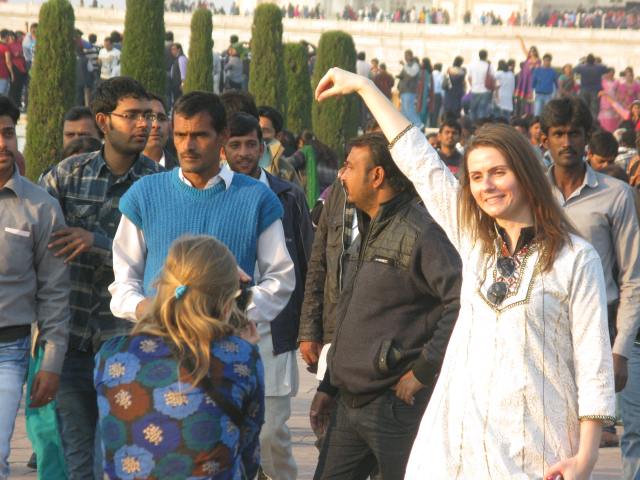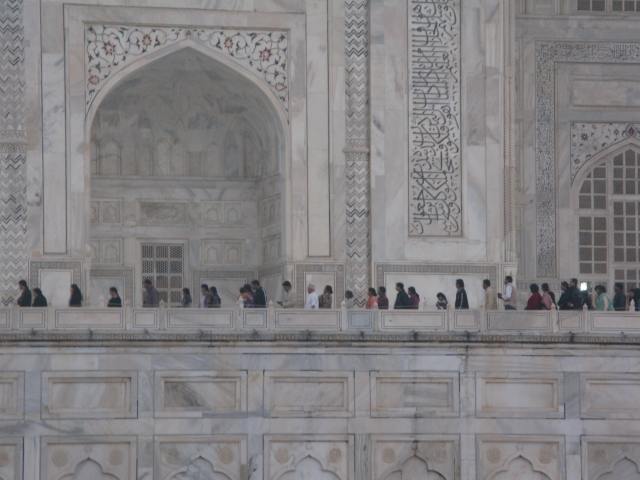I had visited the Mughal tomb complexes before and stood, like a good traveler, at romantic attention to their forms, rising majestically out of the ground, or in the case of the Taj Mahal, seemingly floating in the air.
I had first been to the Taj several years ago, on a glowing white hot May day. Not many crowds, just a few photos of me squinting uncomfortably in the sun. Coming back this year in the winter time with hundreds of tourists pouring into the gates, I started thinking thoughts of a different kind. I couldn’t help but wonder, what are these places for? Humayun’s Tomb, Akbar’s Tomb at Sikandra, and the Taj Mahal, what were their purposes? Perhaps an Urs a year? Who would have access? I really don’t know. If anyone has information, I would of course be interested. Still, this first series of questions pushed me on to yet another question, perhaps more difficult question: what is the Taj Mahal now? That is, not in theory or history, but in practice?
To start, it is a great photo op, surely one of the world’s best. There are four that must be taken. One of the Taj majestically alone, or framed by the gate (as I took above), one of yourself in front of the long neon blue waterway leading to the base with the Taj itself rising in the background, one from the Red Fort, in which you cradle the Taj, miniaturized by distance, in the palm of your hand, and one in which you dangle the Taj from your thumb and forefinger as if you were hanging the last ornament on the Christmas tree like so:

I tried to take some of my own. They didn’t turn out.
But there is really more to it than that. Why does one come, and what does one do. Why go other than to say, yes, I have been there. See me with the Taj. It is difficult to explain why one travels, or visits sites I suppose, but here, it seemed a logic was forming itself, something that I had entirely missed on my first trip to Agra. Let me describe the scene.
All around the Taj, the crowds were divided into two lines, high-value ticket holders, and the rest. There were two lines: one to get up to the pediment of the Taj…:
…And one to get inside the building itself, to the grave of Mumtaz, Shah Jahan’s wife. All the while, I couldn’t get over the fact that it was like being in Tirupati, with the lines for different value tickets, all waiting for that moment of darshan.


I wandered over to the side of the building and realized in some important ways that it had become a pilgrimage site, a temple. To what? Mumtaz? Shah Jahan? India’s Wonder of the World? The Nation? Beauty? Conspiracy theorists have claimed for years that the Taj was actually a Hindu temple in disguise. It is perhaps ironic that it is now becoming some sort of temple in practice.






